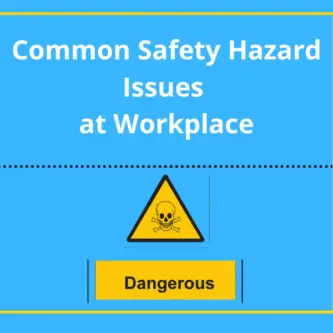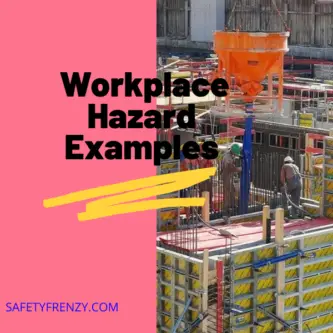Introduction:
Climate change is a significant threat that is currently affecting different industries and workplaces.
Its impact on the environment has led to various physical hazards that affect the health and safety of workers.
Climate change is caused by the increase in greenhouse gases in the atmosphere, primarily carbon dioxide (CO2), resulting from human activities such as burning fossil fuels and deforestation.
This article discusses the effects of climate change on physical hazards in various industries and workplaces.
Heat Stress and Related Illnesses:
One of the most immediate and visible effects of climate change is the increase in temperature. As temperatures rise, the risk of heat stress and related illnesses increases.
This is a major concern for workers who work outdoors, such as construction workers, farmers, and landscapers.
Heat stress occurs when the body cannot regulate its temperature properly, leading to dehydration and other heat-related illnesses such as heat exhaustion, heat cramps, and heatstroke.
Workers who are exposed to high temperatures and humidity, have heavy workloads, or wear protective clothing are at higher risk of heat stress.
To prevent heat stress, employers should provide adequate rest and water breaks, ensure that workers wear appropriate clothing, and provide shade and ventilation.
Workers should also be trained on how to recognize the symptoms of heat stress and how to respond to them.
Extreme Weather Events:
Climate change has also led to an increase in extreme weather events such as hurricanes, floods, and wildfires.
These events can have devastating effects on workers and their workplaces. Workers who are exposed to these hazards include emergency responders, utility workers, and construction workers.
To prevent injury and fatalities from extreme weather events, employers should have an emergency response plan in place.
Workers should be trained on how to respond to extreme weather events, and employers should provide appropriate protective equipment.
Air Pollution:
Climate change has led to an increase in air pollution, which can have adverse effects on the health of workers.
Industries that are particularly affected by air pollution include transportation, manufacturing, and energy production.
Exposure to air pollution can lead to respiratory problems such as asthma and lung cancer.
To prevent exposure to air pollution, employers should reduce emissions from their operations and provide appropriate protective equipment such as respirators.
Vector-Borne Diseases:
Climate change has also led to an increase in vector-borne diseases such as Lyme disease, West Nile virus, and Zika virus.
These diseases are spread by insects such as mosquitoes and ticks, which thrive in warmer and wetter environments.
Workers who work outdoors, such as construction workers and landscapers, are at higher risk of contracting these diseases.
Employers should provide appropriate protective clothing such as long-sleeved shirts and pants, and insect repellent.
Workers should also be trained on how to recognize the symptoms of these diseases and how to prevent them.
Conclusion:
In conclusion, climate change has led to various physical hazards that affect workers in different industries and workplaces.
Employers should take steps to prevent these hazards, including providing appropriate protective equipment, training workers on how to recognize the symptoms of these hazards, and implementing emergency response plans.
By taking these steps, employers can ensure the health and safety of their workers and reduce the impact of climate change on their operations.





